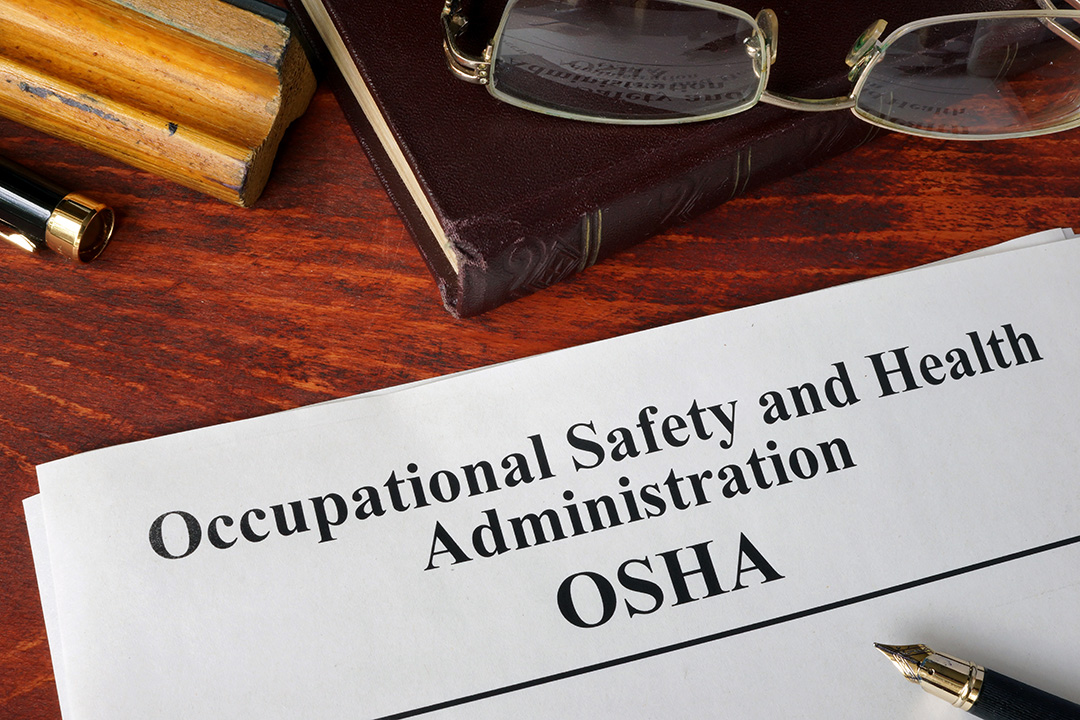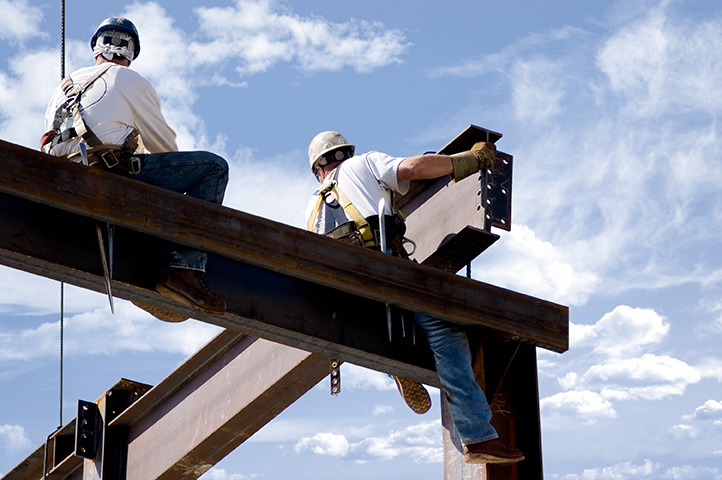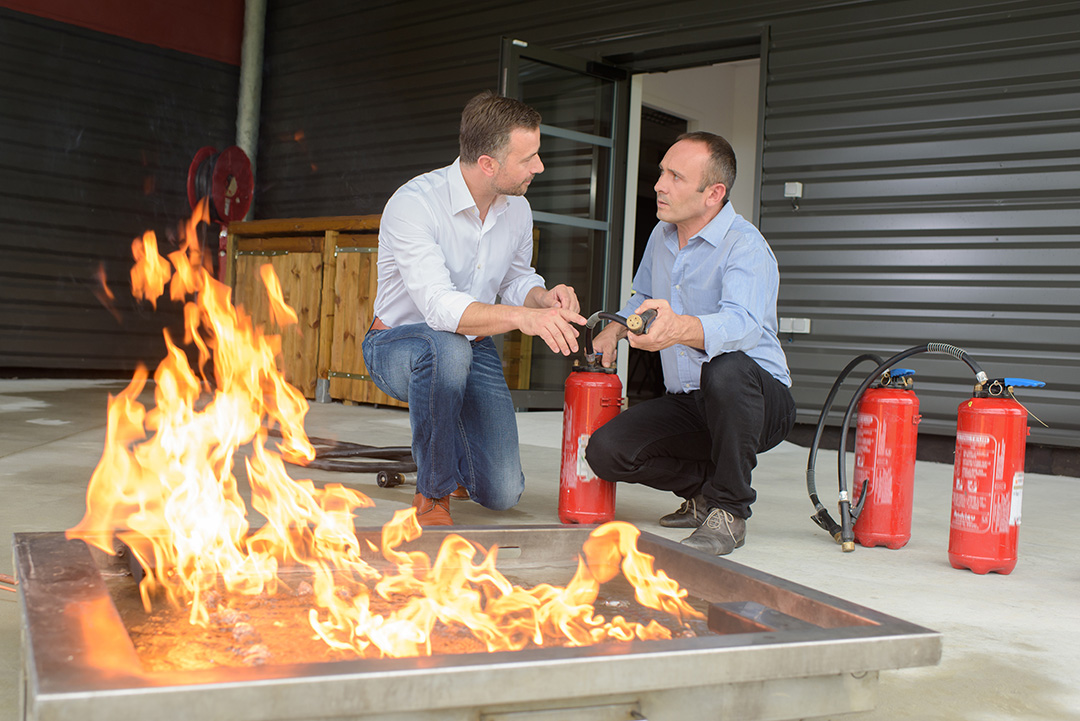Background
The Occupational Safety and Health Administration (OSHA) is part of the United States Department of Labor. OSHA acts as the national public health agency dedicated to assuring safe and healthful working conditions for working men and women. The functions of OSHA include setting and enforcing work-related exposure standards and providing training, outreach, assistance, and education.

Utilizing a “train-the-trainer” model, those who complete the required OSHA Training Institute courses to become an OSHA Outreach trainer are authorized to conduct 10-hour and 30-hour training courses for employees that work in construction and general industry. They can then issue cards to these employees, verifying their successful completion of the training.
The outreach training program consists of four primary industry classifications: Construction, General Industry, Maritime, and Disaster Site Worker. The construction and general industry classifications each include a 10-hour and a 30-hour version. The 10-hour class is intended to provide workers with awareness of common job-related safety and health hazards, while the 30-hour class is more appropriate for supervisors or workers with some safety program responsibility.
OSHA Outreach Training is intended to be an initial training only. Employers are still responsible for providing continuing training to reinforce the concepts presented, and provide any function-specific safety training relevant to the worker’s role and work environment. The outreach training does not fulfill the training requirements in specific OSHA standards. Employers are responsible for providing additional training for their workers as stipulated in OSHA standards.
OSHA continues to maintain that its outreach training is not an OSHA requirement and that none of the courses within the Outreach Training program are considered a certification of any kind. It was intended as – and continues to remain – a voluntary program that provides no additional employer indemnification over an alternative, unregulated approach to occupational safety training. Seven states (Connecticut, Massachusetts, Missouri, Nevada, New Hampshire, New York and Rhode Island) are an exception in that they do require workers to complete the OSHA-authorized, 10-hour construction safety training before they can work on state-funded construction projects.
OSHA-Authorized Program Today
Today, with a few exceptions, the OSHA Outreach Training program remains generally the same, with OSHA-authorized instructors delivering the 10-hour or 30-hour instructor-led courses at vocational schools, union facilities, and factory floors throughout the United States. The OSHA Outreach program trained more than 3.94 million workers during FY 2012 and FY 2016. The breakdown by class type is as follows: OSHA 10-hour Construction 58.2%, OSHA 10-hour General Industry 20.5%, OSHA 30-hour Construction 16.6%, General Industry 30-hour 3.2%, Maritime, 1.5%, and Disaster Site 0.1%.
Since both the OSHA 10- and 30-hour Construction and General Industry classes are the most readily utilized of the OSHA Outreach training courses, let’s examine their curriculum requirements.
OSHA 10 and 30-hour Curriculum Requirements
Construction and General Industry OSHA 10- and 30-hour training modules must cover a specific set of topics. An allotted time must be devoted to each topic. There is a small degree of flexibility during the elective portion of the curriculum, but a minimum of two OSHA-specific electives should be delivered in the 10-hour course, and six topics in the 30-hour.
OSHA 10-hour Construction required curriculum:
The mandatory curriculum must include an introduction to OSHA, personal protective equipment and lifesaving equipment, health hazards in construction and the “focus four hazards” which are falls, electrocution, struck by, and caught in/or between. The elective topics include cranes, excavations, material handling, scaffolds, stairways, ladders, hand and power tools, and one hour of optional material covering industry hazards or an expansion on required topics.
OSHA 30-hour Construction curriculum:
The mandatory curriculum must mirror that of the 10-hour construction curriculum but the time required is increased. The elective topics are expanded in the 30-hour training to 12 hours and they may include safety information about concrete and masonry construction, confined space entry, ergonomics, excavations, fire protection, motor vehicle safety, powered industrial vehicles, safety and health programs, steel erection, welding and cutting, foundations for safety leadership, and 3 hours of optional material covering industry hazards, policies, and an expansion on required topics.
OSHA 10-hour General Industry curriculum:
The mandatory curriculum must include an introduction to OSHA, walking and working surface (including fall protection), exit routes, emergency action plans, fire protection, electrical, personal protective equipment, and hazard communication. The elective topics include hazardous materials, materials handling, machine guarding, introduction to industrial hygiene, blood-borne pathogens, ergonomics, safety and health programs, fall protection, and one hour of optional material that will expand on the mandatory content and/or cover general industry hazards.
OSHA 30-hour General Industry curriculum:
The mandatory curriculum is the same as the 10-hour general industry, but the time dedicated to each topic is extended. The elective topics include the same as the 10-hour electives but also include hazardous materials, permit-required confined spaces, lockout/tagout, machine guarding, welding, introduction to industrial hygiene, blood-borne pathogens, ergonomics, fall protection, safety and health programs, powered industrial vehicles, and seven hours of optional material covering industry hazards, policies, and an expansion on required topics.
As you can see, the curriculum is well-defined and follows a robust topic matrix. The standardized curriculum ensures that each attendee receives similar training no matter their unique work situation. Due to the varied range of topics, all attendees walk away from the training with a foundation of knowledge about how to recognize and identify hazards in many different settings. But for all the benefits of the OSHA 10-hour and 30-hour training program, it still has limitations that prevent it from being the only components of an effective company training program.
What OSHA-Authorized Training Is NOT!
Does NOT offer any additional indemnity or level of compliance over other training alternatives.
Employers often assume that because the training is authorized by a government agency, it provides some additional level of compliance over other training programs. The fact is that this is just not so.
Companies that participate in the OSHA Outreach program by providing OSHA 10- and 30-hour training to their employees will still be found legally responsible for workplace accidents and fatalities that occur. An employer receives no additional indemnification for providing OSHA 10- and 30-hour training to workers over other safety training alternatives. The training provided by this program is intended to provide basic safety hazard awareness; it is up to the employee and employer to ensure that operations are properly performed.
Not necessarily the best approach to ensuring safety and compliance.
A fundamental weakness of any standardized safety training program, such as the OSHA-authorized training, is that the training rarely comprehensively addresses the hazards specific to any one employee role or worksite. To be most effective, safety training must be as relevant as possible to the individual learner, and because of the rigid structure of the OSHA-authorized training there is little opportunity to focus on or emphasize specific learning objectives relevant to the learner’s work experience.
A better approach is to base safety training on individual job hazard analysis (or job safety analysis) and establishing links between those identified hazards and appropriate training to address them. The purpose of job safety analysis is to discover hazards and then find ways to protect workers. The analysis is a specific breakdown of a job to understand its related hazards. Job safety analysis is generally a collaborative effort and acts as a means of protecting workers or preventing hazards.

- Jobs that cause consistent injuries or illness
- Jobs that may cause consistent injuries or illness
- Jobs that could cause severe or disabling injuries or illness
- New jobs
- Jobs that have changed recently
- Jobs complex enough that written instructions are needed
If hazards are identified while conducting a safety analysis, that information can be incorporated into company training. It is important to offer training that is practical and that helps workers feel competent to recognize and subsequently report hazards they may encounter.
Does not satisfy the employer’s continuing safety training requirements.
The OSHA 10 and 30-hour are voluntary training opportunities and they were not meant to be the only training that employees receive. If your company requires its employees to attend an OSHA 10- or 30-hour training they certainly will be better equipped to identify workplace hazards, but this only begins to build their knowledge base. It is important that administrators and supervisors convey that the OSHA 10- and 30-hour training program is intended to lay a foundation to build on during future training that is customized to address job-specific hazards.
Does not satisfy the training requirements specified in OSHA standards.
Employees that are classified as maritime, construction, agriculture, federal, or general industry are required to participate in additional training programs based on OSHA standards that relate to exposures and hazards they may work directly with or around. Employers should be well-versed in OSHA standards that relate to operations conducted at their worksites.





